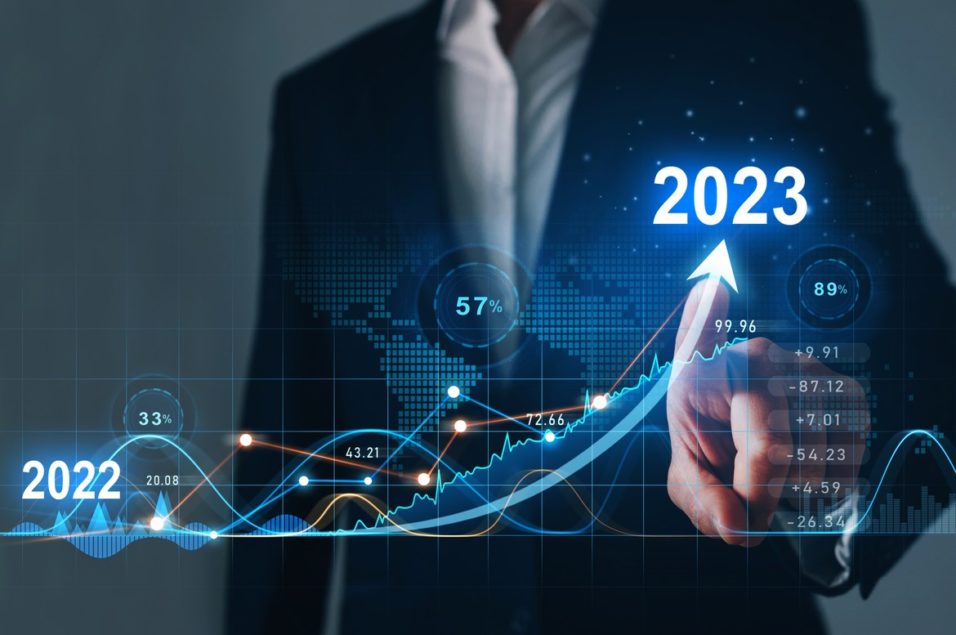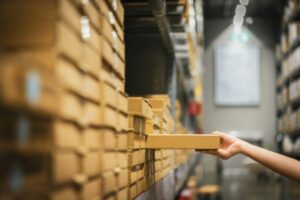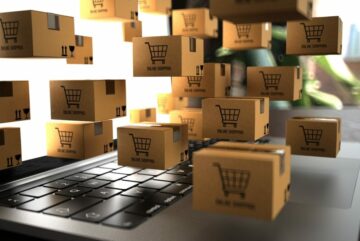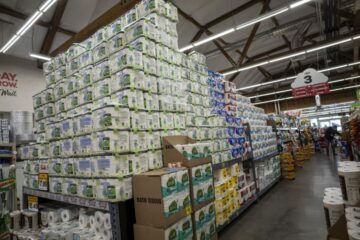
At a time when margins are tight and economic volatility is relentless, the ability to plan with accuracy is invaluable for suppliers and distributors. When supply chain partners are able to rigorously track performance and using that data to make informed decisions about market trends and opportunities, they avoid costly mistakes, improve efficiency and gain long-term competitive advantage.
Supply chain partners have never had greater access to tools for data collection and analysis than they do now, but many are failing to take full advantage of these resources. The supply chain sector has been slow to digitize, and this has left many suppliers and distributors with antiquated methods for establishing and tracking business goals, managing rebates and forecasting.
Supply chains must build their data collection and analysis platforms around where they’ve been, where they want to go, and how they’re going to get there. These steps will ensure that leaders have visibility into past performance and obstacles, as well as a framework for formulating financial goals, an effective rebate strategy, and metrics for success.
Know Where You’ve Been
There are many sources of historical supply chain data: product demand, previous spend, customer satisfaction, lead and transit times and seasonality, to name a few. To gather and analyze this data, it’s necessary to focus on visibility across as much of the supply chain as possible. According to a 2022 McKinsey survey of supply chain leaders, over two-thirds have “implemented digital dashboards for end-to-end supply chain visibility,” and the companies that did so were twice as likely to have avoided disruptions at the beginning of that year.
Supply chain management is inherently data-intensive, consisting of many moving parts that have to be synchronized. That’s all the more important during periods of economic turbulence. It’s also tough to implement a rebate strategy if supply chain partners don’t share access to historical data showing how specific products are selling, what demand looks like in different market segments, and how volume is fluctuating.
You can’t plan for the future if you’re uninformed or misinformed about the past. This is why supply chain leaders have to prioritize ongoing data collection while putting the information they’ve already gathered to use in forecasting, rebate negotiations and other critical functions.
Know Where You Want to Go
No matter how much data you have, it won’t do much good if it doesn’t produce insights that drive benefits. End-to-end visibility isn’t just about addressing crises as they arise and mitigating their cost; it’s about making data-driven decisions that will shape and execute the overall business strategy. This data will help to formulate concrete goals that are informed by real-world advantages and constraints. A goal is meaningless if it’s either impossible to achieve or so modest that it doesn’t spur innovation and productivity.
Emerging technologies such as machine learning will have a significant impact on supply chain management, particularly when it comes to data-driven decision-making. A recent Gartner survey found that 78% percent of chief supply chain officers believe machine-learning augmentation will be integral to scenario planning and modeling, while almost three-quarters expect it to be used for market intelligence and forecasting. Supply chain leaders are expecting technology to play a crucial role in visibility and planning more broadly — 90% say visibility technology is a high priority, while 69% say the same about predictive analytics.
Supply chain leaders also need real-time data to determine whether they’re on track to meet their goals. It will be much easier for suppliers and distributors to quickly adapt to changing circumstances if they have a clear vision of what goals they’re pursuing, and which measures they’re using to gauge progress.
Know How to Get There
For today’s supply chains, data collection and forecasting must be collaborative. Partners should always be in alignment on goals and metrics, and need access to a centralized digital platform to maintain transparency and facilitate cooperation. When suppliers and distributors negotiate and base decisions on a single source of truth, the likelihood of a dispute falls significantly, and relationships that have suffered due to global supply chain disruptions become more sustainable.
Rebates offer a safety net for distributors by providing extra injections of cash based on the purchases and sales they make, and it’s critical to know when that money will arrive and how much to expect. Likewise, manufacturers use forecasts not just to ensure they’re in control of production requirements, but to keep track of how much they owe so they don’t find themselves short on cash at a critical moment. Suppliers and distributors won’t have this information if they don’t develop the digital infrastructure necessary to gather and interpret data, share it with all relevant stakeholders, and convert it into usable insights.
From the identification of trends to the development of business goals and implementation of a rebate strategy, data-driven forecasting is only becoming more essential in the supply chain sector. The companies that are investing in forecasting now won’t just be in a strong position to navigate economic turmoil in 2023. They’ll also build stronger relationships with their partners, limit their risk and discover new business opportunities.
Nick Rose is chief financial officer at Enable.
- SEO Powered Content & PR Distribution. Get Amplified Today.
- Platoblockchain. Web3 Metaverse Intelligence. Knowledge Amplified. Access Here.
- Source: https://www.supplychainbrain.com/blogs/1-think-tank/post/36447-why-reliable-forecasting-is-a-must-have-for-supply-chain-partners
- 2022
- 2023
- a
- ability
- Able
- About
- access
- According
- accuracy
- Achieve
- across
- adapt
- addressing
- ADvantage
- advantages
- All
- already
- always
- analysis
- analytics
- analyze
- and
- around
- avoided
- base
- based
- become
- becoming
- Beginning
- believe
- benefits
- broadly
- build
- business
- Cash
- centralized
- chain
- chains
- changing
- chief
- Chief Financial
- chief financial officer
- circumstances
- clear
- collaborative
- collection
- Companies
- competitive
- Consisting
- constraints
- control
- convert
- cooperation
- Cost
- critical
- crucial
- customer
- Customer satisfaction
- data
- data-driven
- Decision Making
- decisions
- Demand
- Determine
- develop
- Development
- DID
- different
- digital
- digitize
- discover
- Dispute
- disruptions
- distributors
- Doesn’t
- Dont
- drive
- during
- easier
- Economic
- economic volatility
- Effective
- efficiency
- either
- end-to-end
- ensure
- essential
- establishing
- execute
- expect
- expecting
- extra
- facilitate
- Falls
- few
- financial
- Find
- Focus
- formulating
- found
- Framework
- full
- functions
- future
- Gain
- Gartner
- get
- Global
- Go
- goal
- Goals
- going
- good
- greater
- help
- High
- historical
- How
- How To
- HTTPS
- Identification
- Impact
- implement
- implementation
- important
- impossible
- improve
- in
- information
- informed
- Infrastructure
- Innovation
- insights
- integral
- Intelligence
- invaluable
- investing
- IT
- Keep
- Know
- lead
- leaders
- learning
- likely
- LIMIT
- long-term
- LOOKS
- machine
- machine learning
- maintain
- make
- management
- managing
- Manufacturers
- many
- margins
- Market
- Market Trends
- Matter
- McKinsey
- measures
- Meet
- methods
- Metrics
- mistakes
- mitigating
- modeling
- moment
- money
- more
- moving
- Must-Have
- name
- Navigate
- necessary
- Need
- negotiations
- net
- New
- obstacles
- offer
- Officer
- officers
- opportunities
- Other
- overall
- particularly
- partners
- parts
- past
- percent
- performance
- periods
- plan
- planning
- platform
- Platforms
- plato
- Plato Data Intelligence
- PlatoData
- Play
- position
- possible
- Predictive Analytics
- previous
- Prioritize
- priority
- produce
- Product
- Production
- productivity
- Products
- Progress
- providing
- purchases
- Putting
- quickly
- real world
- Rebate
- recent
- Relationships
- relentless
- relevant
- reliable
- Requirements
- Resources
- Risk
- Role
- ROSE
- Safety
- sales
- same
- satisfaction
- scenario
- sector
- segments
- Selling
- Shape
- Share
- Short
- should
- significant
- significantly
- single
- slow
- So
- Source
- Sources
- specific
- spend
- stakeholders
- Steps
- Strategy
- strong
- stronger
- success
- such
- suppliers
- supply
- supply chain
- supply chain management
- Supply Chain Visibility
- Supply chains
- sustainable
- Take
- Technologies
- Technology
- The
- The Future
- the information
- their
- themselves
- There.
- time
- times
- to
- today’s
- tools
- track
- Tracking
- transit
- Transparency
- Trends
- turbulence
- two-thirds
- use
- visibility
- vision
- Volatility
- volume
- What
- whether
- which
- while
- will
- year
- zephyrnet












